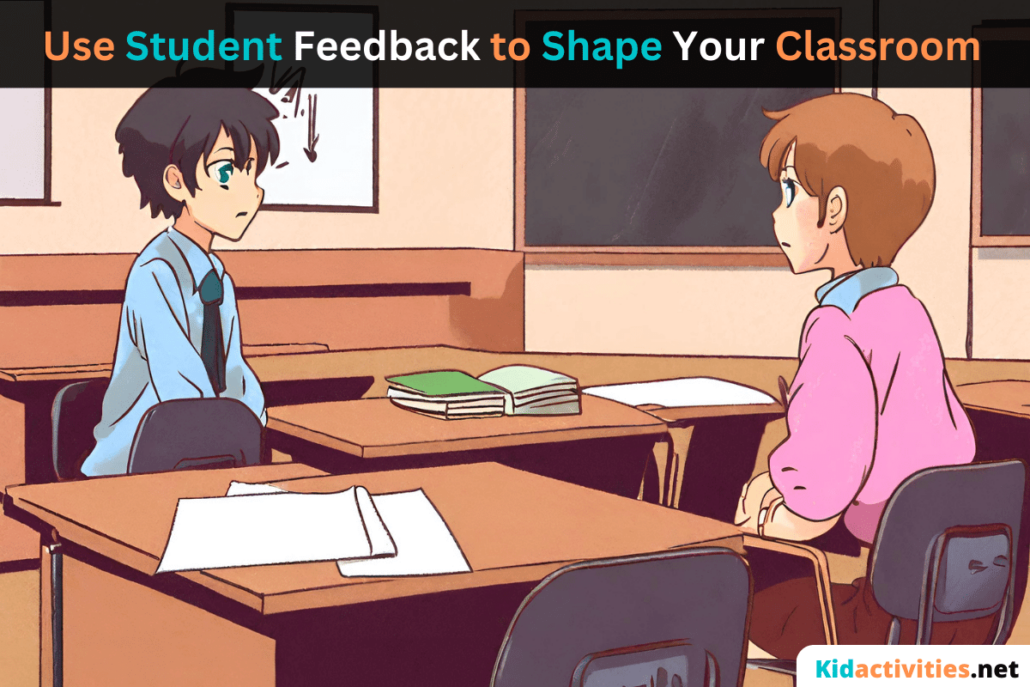As a teacher, everything you do at school is for your students – from the intentional classroom design to the seating charts to the wall decor to each component of the lesson plans. You know that the choices you make matter to your students and make an impact on their learning and success. A large part of being a teacher involves reflection on how effective your choices are in setting students up for an optimal learning experience.
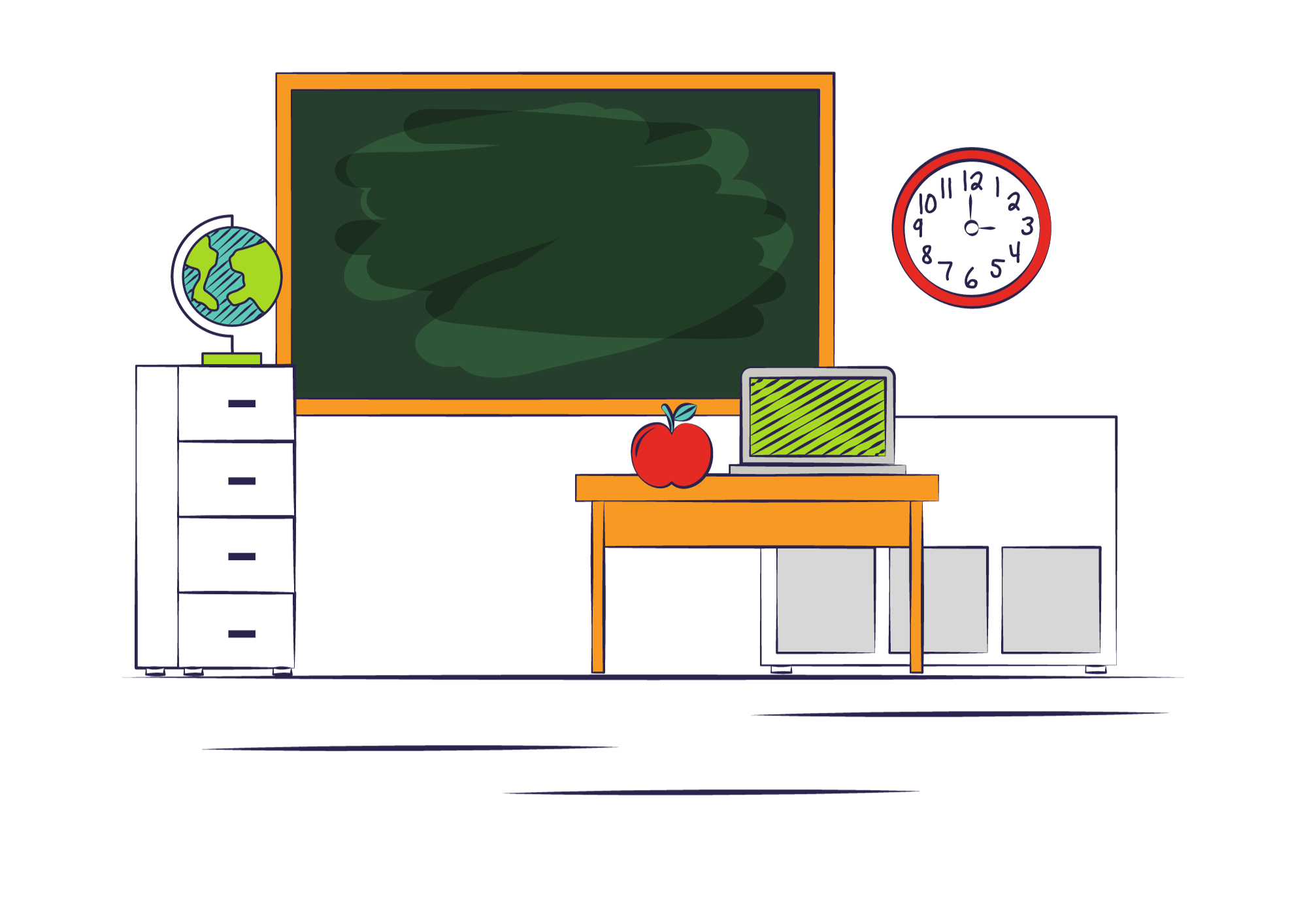
“Are the students having a positive learning experience?”
“What would make this lesson plan even better?”
“How could the students get even more out of our time in the classroom?”
These are questions that most teachers ponder while reflecting on how the year is going. One of the most effective ways that teachers can ensure that the students have a positive school experience is to involve student feedback in shaping the design and procedures of the classroom!
Stoplight Share
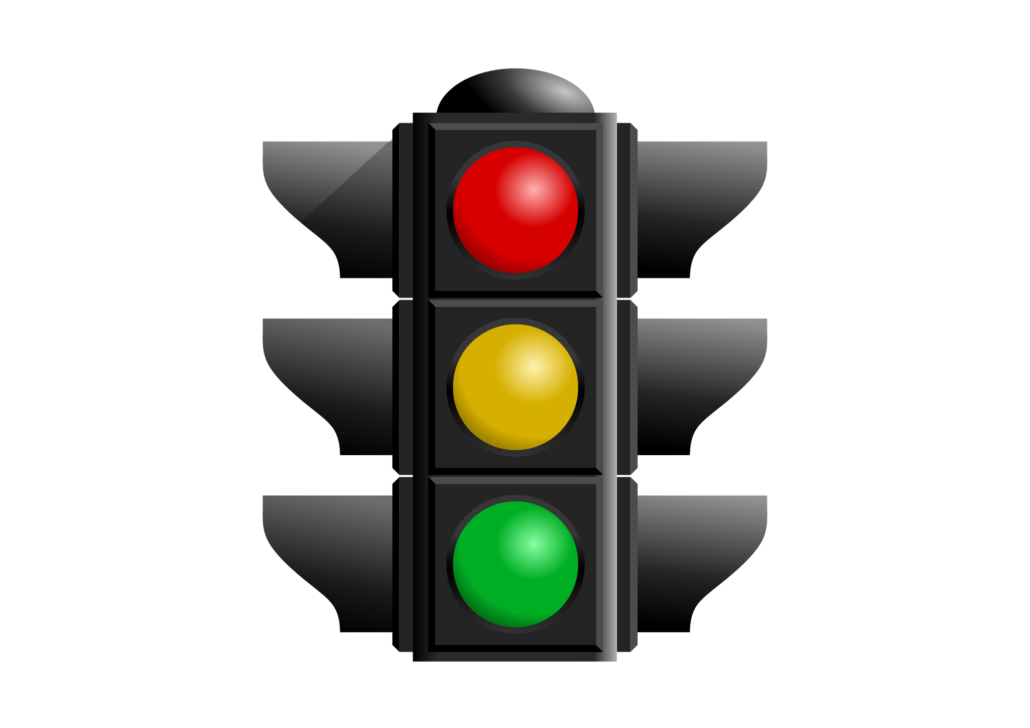
Every quarter, I provide my students with a Stoplight Share. Stoplight Share can be in the form of a Google Doc or printed handout. Students have time in class to quietly write what they want to start, stop, and continue in class.
The stoplight share simply asks the question, “What would you like to keep, change, and stop in our classroom?”
Next, students respond to three specific questions:
- What is one aspect of our class you would like to stop?
- What is one aspect of our class you would like to change?
- What are aspects of our class you would like to keep?
It is helpful for students to have parameters over what they can suggest. For example, if you teach math, your students cannot ask you to stop teaching math.
They can, however, ask that you gamify some of the content for fun, interactive learning activities. They might also ask you to slow down your pacing so they can more easily keep up with their learning. Perhaps students will even ask if you can take time in class to review missed quiz questions!
Check-Out Reflection
A Check-Out Reflection is an Exit Ticket that prompts students to reflect on how their class went on a holistic level, emotionally to academically. As a teacher, this reflection will give you a sense of how your students perceive their understanding of the content and provide insight into how they are in general.
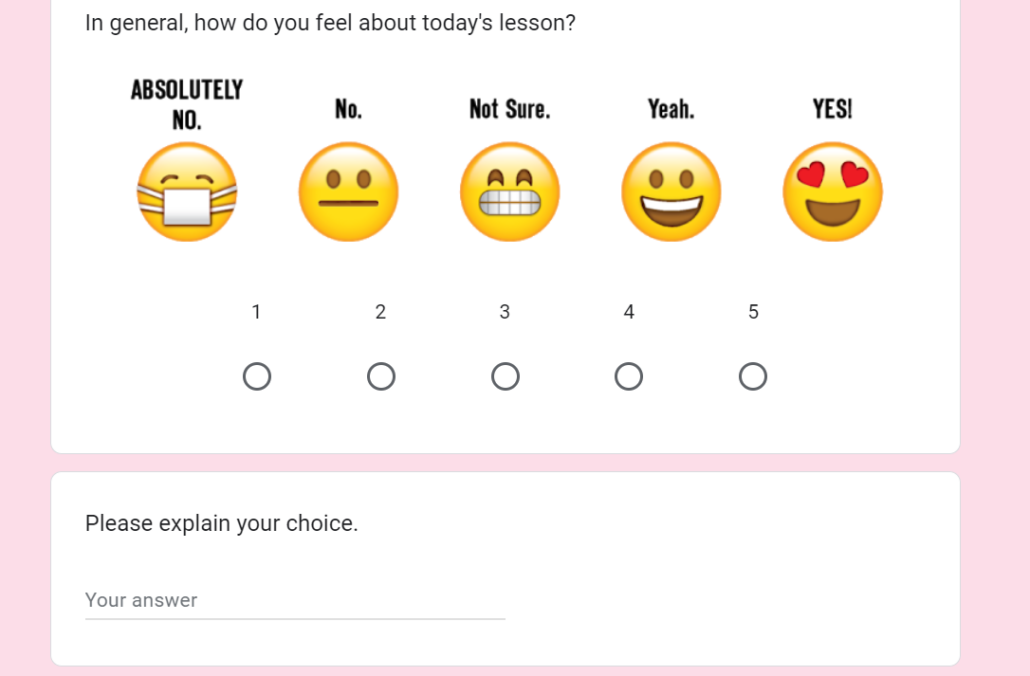
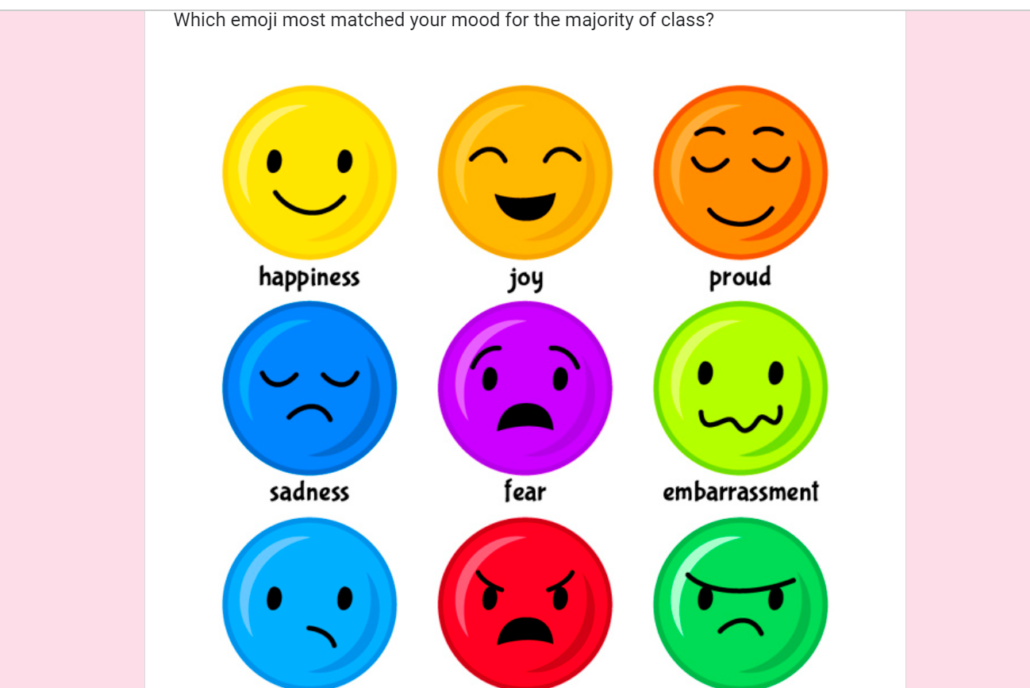
The first question on the Check-Out Reflection inquires, “In general, how do you feel about today’s lesson?” The student can select from a range of five emoji faces, depicting, “Absolutely no” to “YES!” The student provides details with the prompt, “Please explain your choice.”
Next, students are given nine emojis that display specific and labeled emotions ranging from happiness to embarrassment to upset. They select an emoji and explain why they felt that way in class today.
After that, students answer the following four questions:
- What is one thing you did well in class today?
- What is one thing you could improve upon in class tomorrow?
- If you could give your teacher one piece of advice to improve today’s class, what would it be?
- What are your feelings, thoughts, or reflections on what you learned today?
These questions not only spark positive feelings as the student reflects on what they are proud of but also hold them accountable for their success in a class by asking how they could improve as a student. Students know their voice is valuable to their teacher as they provide advice and general thoughts on making the class even better!
Classroom Design Contest
Imagine: It’s a few weeks into school. Students have learned expectations and classroom procedures. You and your students have established respect and trust with one another. Are you ready to take your level of trust to the next level?
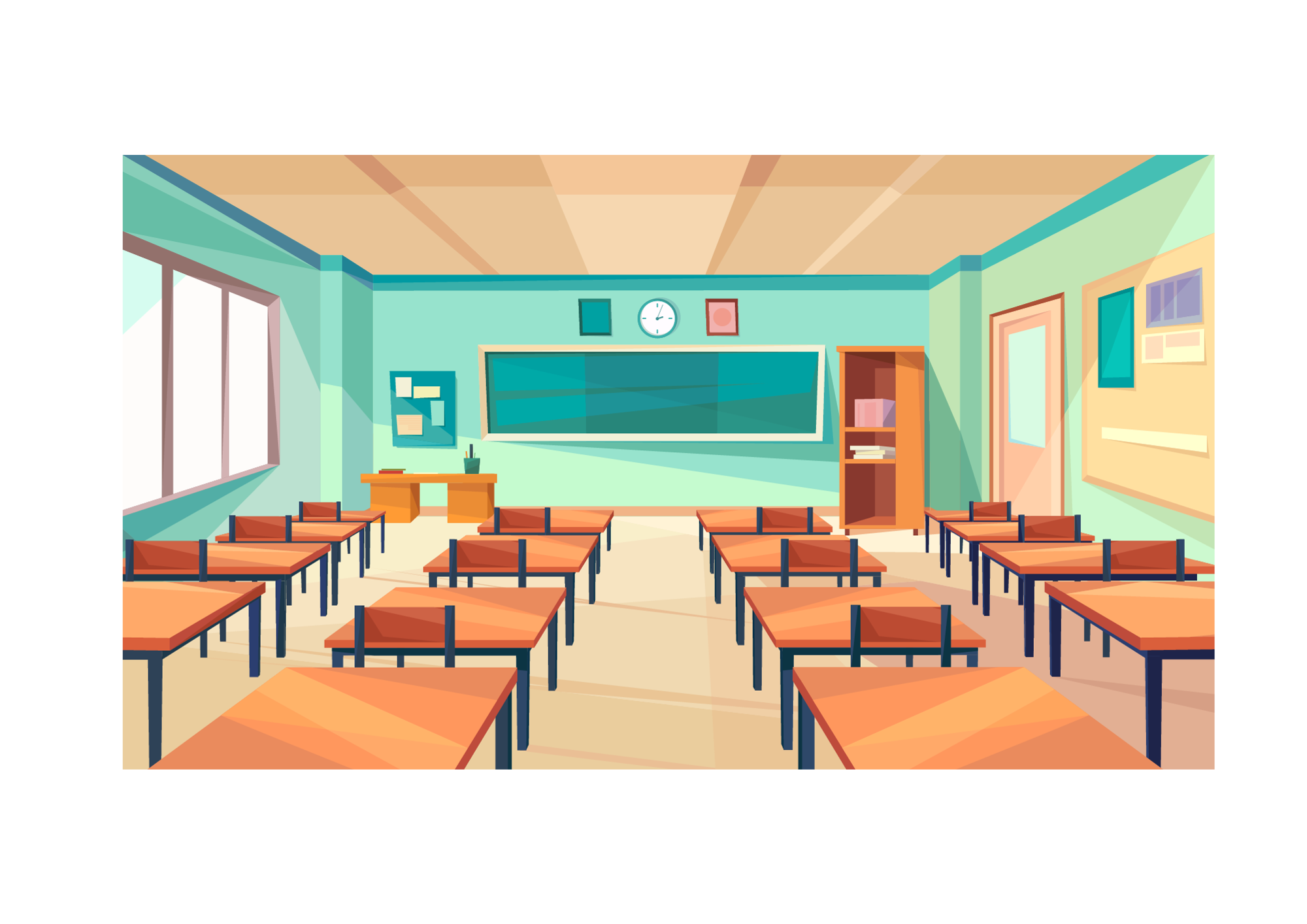
Take a moment to visualize your classroom.
What does the seating arrangement look like? What decor adorns your bulletin boards? What learning stations have you built into your classroom environment? How attached are you to the current design?
Next, let’s think about your level of preferred control over your classroom and its design. Are you willing to give up your favorite part of your classroom design? Do you trust your students to design their classroom structure? Do you believe your students are capable of making the best choices to maximize the benefits of their learning environment?
If so, you may be ready for the Student Design Challenge!
The Student Design Challenge allows students to work individually, in pairs, or in small groups to consider and design how they want their classroom to look and operate.
The Student Design Challenge focuses on three components of the classroom:
- Seating Arrangement: How should the seats and/or desks be arranged? What flexible seating options should be offered?
- Classroom decor: What should be featured on the bulletin boards? Walls? Classroom posters? How should the furniture be arranged?
- Learning Stations: What learning stations should be positioned throughout the classroom to support learning or offer enrichment opportunities when students are finished with work? What supplies should be at each station? How many students should be at each station at one time? What should the rotation schedule look like?
Students should develop ideas, illustrations, and explanations for why their selections would benefit the entire classroom. They should present their ideas to the class. Together, the class can collaborate on which ideas to select, or vote for the favorite per category. Then, everyone follows through on making the designs come to life!
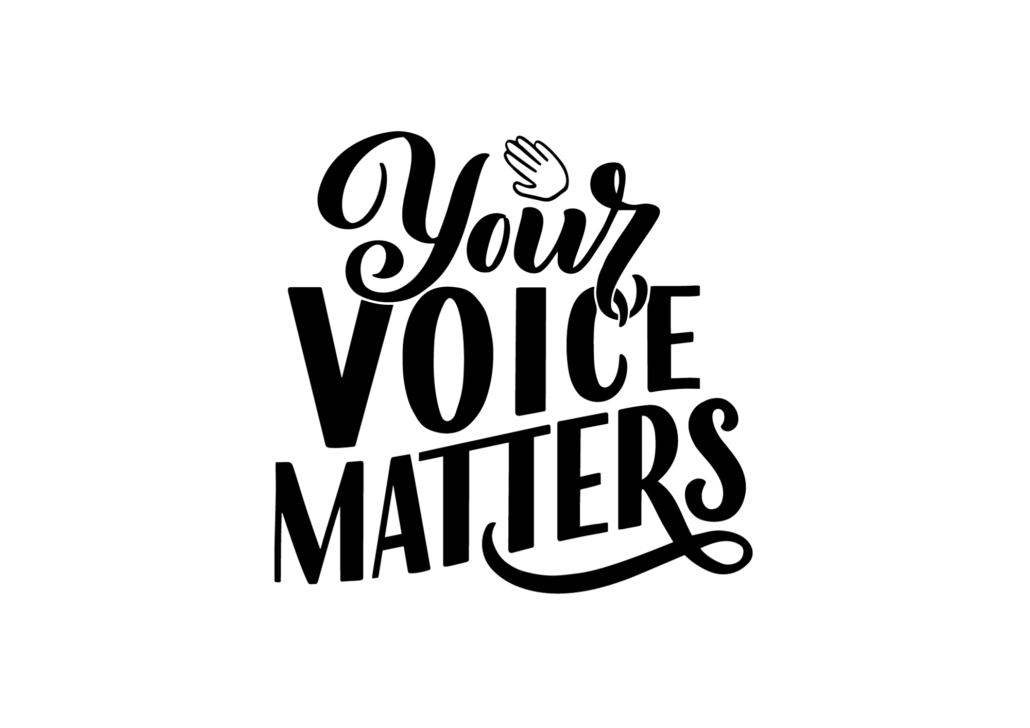
Using student voice to design a classroom cultivates a community that is responsive to and reflects who students are and what matters to them. Having a say in their learning environment gives students the message that they are capable of making informed choices for how they learn best. Using student feedback to shape your classroom promotes student “buy-in” for contributing to their community. See how your students flourish as they develop the leadership and collaboration skills to shape their classroom!
F.A.Q.s
Q: What if my students don’t have feedback on every part of the Stoplight Share?
A: That’s okay! Perhaps a student has something they would like to start or continue, but there is nothing they particularly want to stop. They can simply leave that question blank! You will likely be offering this feedback form a few times per year, so a student’s level of feedback will likely fluctuate at times.
Q: How do I incorporate the Check-Out Reflection into my day when I already have students fill out Exit Tickets?
A: Consider merging the two! Perhaps add your exit ticket question to the Check-Out Reflection form or handout to collect all the information you need.
Q: What if my students suggest classroom ideas that are outlandish or out of budget?
A: Before you begin, remind students that their designs need to reflect the furniture and classroom supplies that already exist in the classroom. If they choose to suggest out-of-reach ideas, their proposal may be disqualified due to not being realistic.
